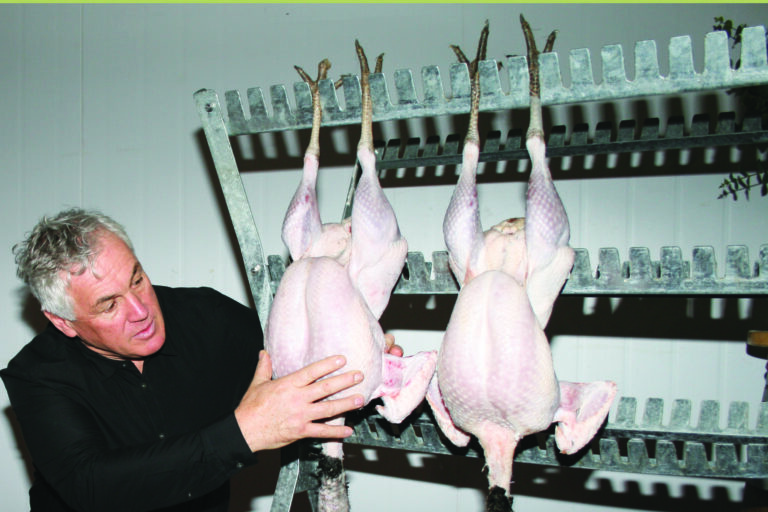Gas stunning of poultry – already widely used by large processors – is being brought within the reach of small producers through an innovative project by Kelly Turkeys.
Over the past two years the company has been working with hatchery consultant Ed Hurford to pioneer a carbon dioxide stunning system that will be practical and affordable for handling small numbers of poultry.
A prototype of the new Gallus Gas System is being demonstrated at the triennial Poult Day on March 14 organised by sister company FarmGate Hatcheries and attended by well over 200 producers and others involved in the traditional turkey Christmas market.
The company secured £80,000 grant support from LEAF (Local Environmental Action Fund) to help develop the project. Last autumn Kelly Turkeys successfully trialled the technology on one of its farms, dealing with several thousand birds.
A larger version has already been approved by the RSPCA and will be used by Kelly Turkeys in processing turkeys for the Christmas market this year. Now development is progressing on the small-scale unit that will also be suitable for culling purposes.
“The major poultry producers have invested heavily in gas stunning technology and established its benefits in carcass quality and perceived welfare benefits,” said Paul Kelly, managing director of Kelly Turkeys, of Danbury, Essex. “But outlay on this technology, and the cost of buying and storing CO2, has not been feasible for small-scale operations. This is where we see a market for our new product in this country and abroad.”
Sales and marketing of the new system will be done through Gallus Systems Ltd, a joint venture between Kelly Turkeys and Ed Hurford’s company Gallus Solutions.
“The Gallus Gas System is aimed at meeting the challenges of smaller poultry producers and moves one step closer in giving them access to the retailers looking for family-owned brands but requiring gas as a method of stunning,” said Ed Hurford.
“Complying with current legislative and welfare bodies, the system uses the preferred two-stage method of slaughter which was developed using advice from the RSPCA.
“This is a highly adaptable, easily maintainable and affordable system which will integrate into most small producer lines without major modifications to the slaughter area.”


